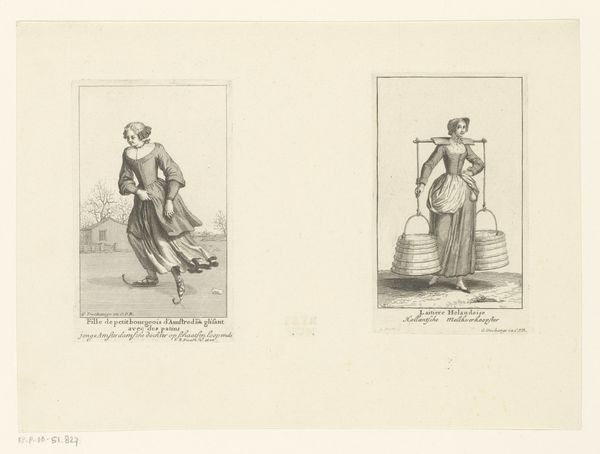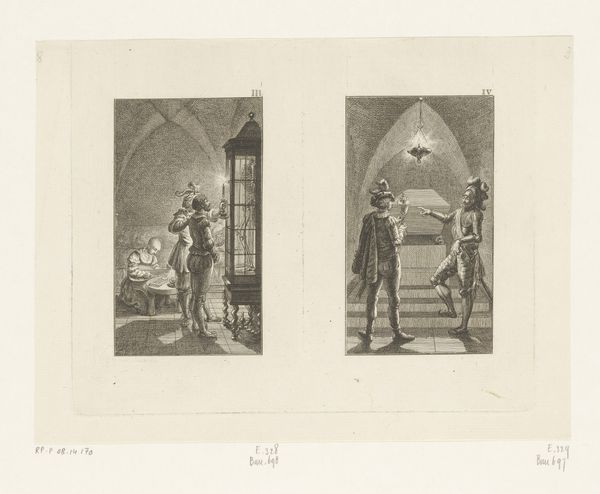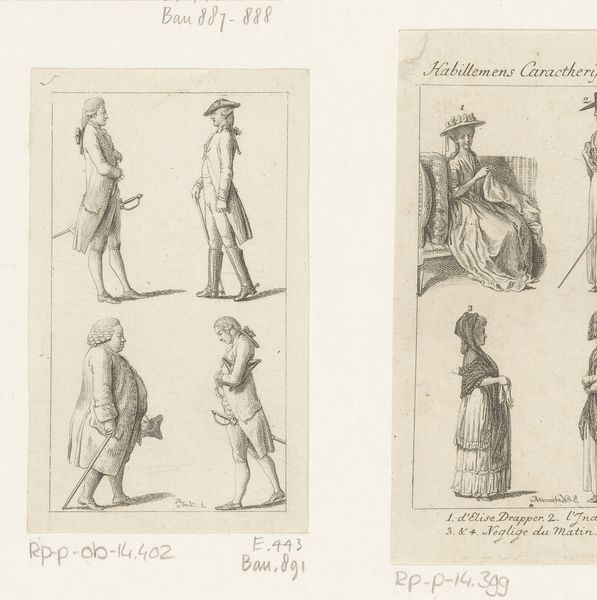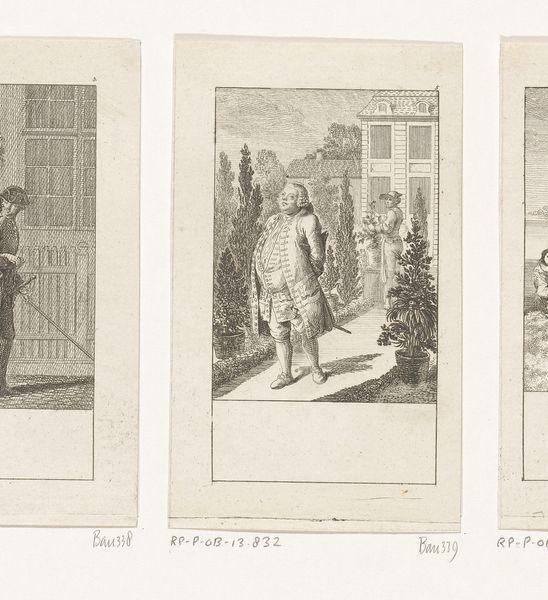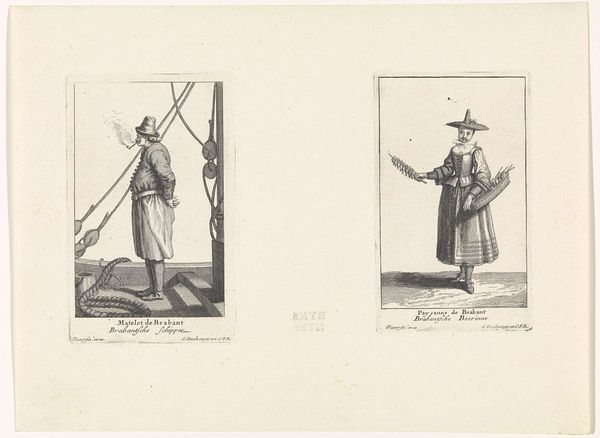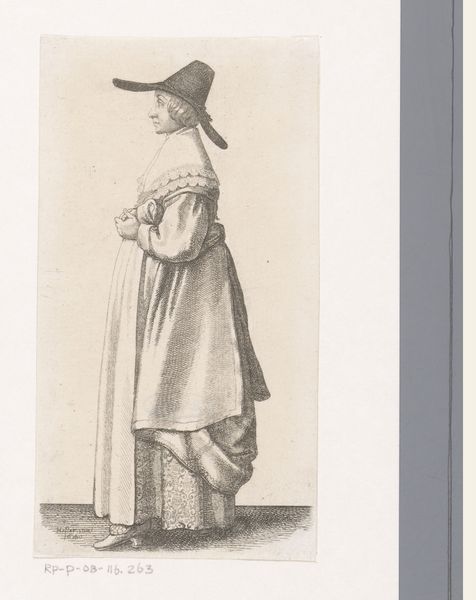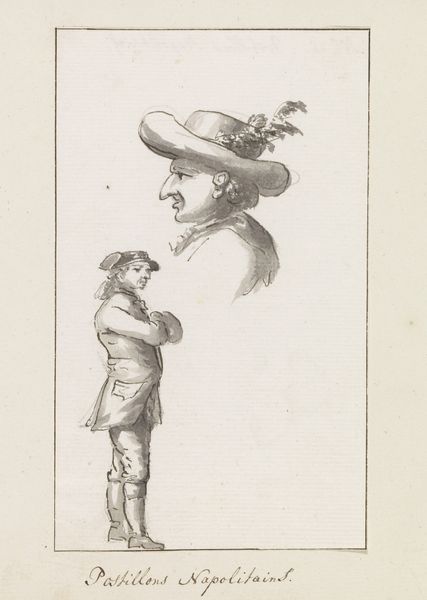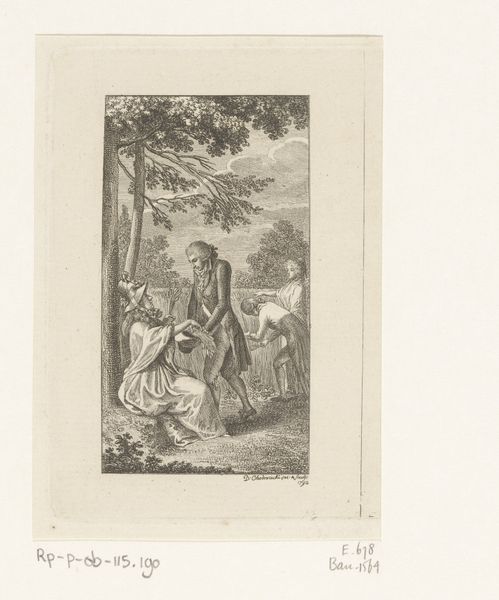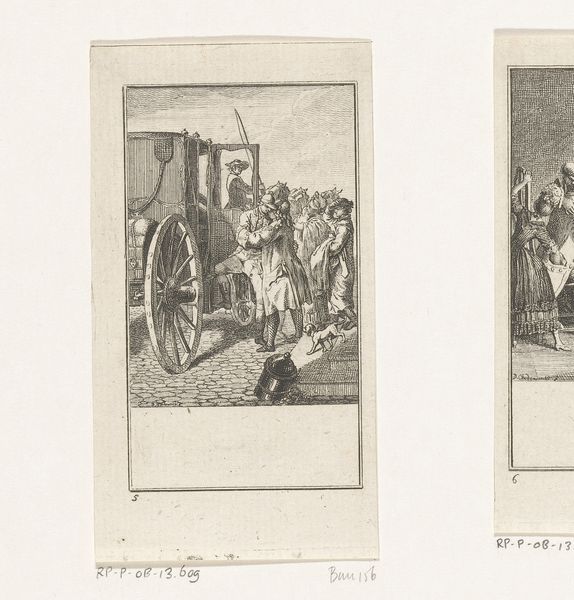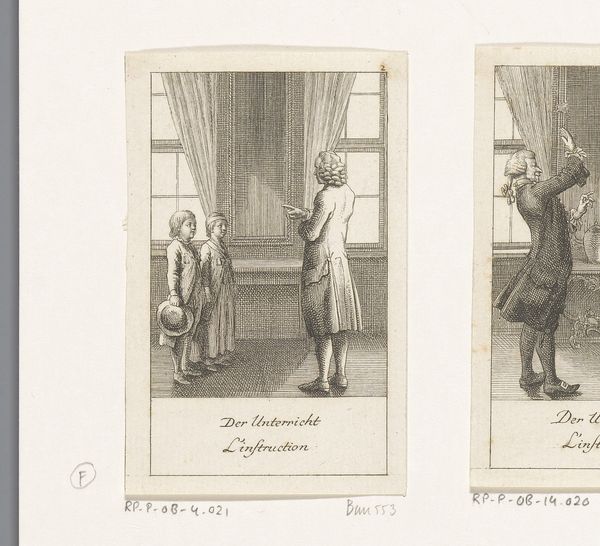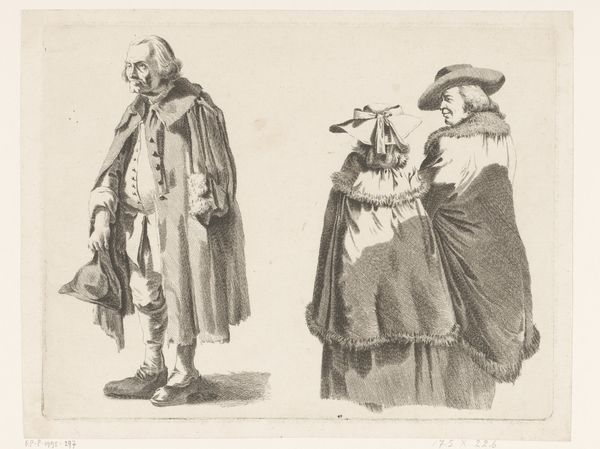
print, engraving
#
portrait
#
baroque
#
dutch-golden-age
# print
#
genre-painting
#
history-painting
#
engraving
Dimensions: height 118 mm, width 69 mm, height 119 mm, width 71 mm, height 188 mm, width 255 mm
Copyright: Rijks Museum: Open Domain
Curator: Here we have Bernard Picart's print, “Boerin en boer uit Scheveningen," dating back to 1728. It's a captivating look at the attire of the common folk in Scheveningen, now a district of The Hague. Editor: Immediately, I’m drawn to the stark simplicity of the line work, that precision! The lack of color amplifies the almost stoic mood and really emphasizes the contrasting textures of cloth and barren earth. Curator: Absolutely! The attire itself speaks volumes. Notice how distinct it is—Picart clearly emphasizes their cultural identity and regional specifics in dress. Editor: Yes, you can really appreciate the formal details. See how the hat of the woman creates almost a visual rhyme with the crown of the barren tree on the left panel. Similarly, on the right, the man's more rounded hat and physique echoes the dense foliage in the backdrop. Curator: What interests me is the possible function. Given the historical context, I would hazard a guess it served some form of cultural documentation, showing a view of Dutch life during a very specific slice of time. Print media was vital for disseminating visual culture far and wide. Editor: Good point. Structurally, though, it functions beautifully. See how Picart arranges everything? The subjects are anchored firmly by the weighted line work of their lower halves. And yet their lighter headgear draws the eye upward to the negative space in the backdrop—allowing your vision to travel beyond. Curator: Beyond Scheveningen and perhaps also beyond its specific point in history. It speaks, maybe unintentionally, about the rural population on the eve of modernization. The visual focus of Picart’s detailed rendering serves as both record and romantic vision. Editor: Indeed, and if you focus for a moment on just the geometry: each figure framed in stark parallel. Minimal details become tools for profound visual meaning, giving this genre painting historical power. Curator: Looking at these images, I see lives documented, and, simultaneously, idealized. It's a lens through which the 18th century understood itself. Editor: I concur. Picart masterfully harnesses simple lines to depict the formal structure, emotional character, and rich contextual subtexts inherent to rural Dutch life of the era.
Comments
No comments
Be the first to comment and join the conversation on the ultimate creative platform.

